How to rewild a career
And bring creativity back from the dead
Do you have strong opinions about the existence of grass lawns?
I didn’t either, until I started learning about animals, which led me to learning about their habitats, which led me to a lot of anti-lawn opinion pieces and TED Talks and Instagram accounts.
There’s a whole grass-lawn-hating community out there waiting for you, should you be so compelled to dip in!
Besides their insatiable appetite for chemicals and large amounts of water, lawns with their uniform green monoculture threaten biodiversity. When only one non-native plant is allowed to thrive, the ecosystem gets all messed up.
Without flowers, for instance, bees can’t find anywhere to snooze, and thus can’t carry out their important bee work of pollination or providing ambiance during a summer picnic by buzzing around our heads.
In order to create a blissful thriving ecosystem full of bees and other happy life forms, the anti-lawn brigade encourages rewilding.
That means putting the work back in nature’s hands and out of ours. No lawn mowers, no chemicals, just vibing.
Apparently you can’t rewild overnight; there are steps to follow and books to read and bumper stickers to buy. It’s a big project, because the land has to figure out a completely different way of being and growing.
I know it’s a big project, because I myself am in the middle of rewilding at the moment.
But I’m not rewilding land; I’m rewilding my career.
(Or vocation, mission, creative work, whatever you want to call it).
This project has taken years for me just to begin, because I didn’t realize I had a lawn on my hands. I thought I had dead land.
Five years ago, my ideas just…stopped. I had no motivation to create anything and when I looked out at my creative career, all I saw was a barren field with crows flying overhead like a depressing Van Gogh painting.
And thus, I became depressed myself, and took any opportunity to mope around my dried-up crops.
A year later, I realized I’d had it wrong. I had the opposite of dead land. I had a chemical-laden, over-sterilized, over-mowed, and over-worked grass lawn.
Nobody saw what I saw when I said it was barren land; they saw plenty of life. The problem was, the life wasn’t regenerative or thriving or supporting an ecosystem or sheltering bees.
It was all maintenance and no joy.
There weren’t any life cycles, surprises, or new unidentified ideas who wanted to make my mind their habitat. I was the one keeping it carefully manicured and predictable, so nature didn’t get a chance to do its own thing, to startle or astonish me.
“What if you tried getting weird?” asked my career coach, who frequently referenced the chaotically-collaged walls of my childhood room as a point of inspiration for going forward.
He encouraged me to tap into that wacky, fluid freedom that society only allows in little rainbow-dressed children or old ladies with gigantic earrings.
“Get weird with it,” he repeated, and assigned me The Llama as my animal guide: funky, tenacious, willing to be misunderstood.
“Be a clear no for some people so you can be a clear yes for others.”
A lawn is mildly pleasing to most, but deeply resonant to no one. If the llama was my fauna guide, then an overgrown wildflower field with plenty of dandelions was my flora guide.
I’m still in the rewilding process and probably always will be (it’s tempting to take control of the growth once again!), but I can see now how loose, mangled, and revelatory this little ecosystem has become.
The fun thing about rewilding is that every restored plot of land will look and smell completely different.
My own rewilding looks like this:
1. Stop Mowing and Fertilizing
To begin the process, I had to start letting the grass just grow.
Easier said than done, but this meant canceling the performance: letting go of appearances, consistency, and relentless upkeep—especially the impulse to stay “on brand.”
Fitting into old templates was making me utterly miserable, but I thought stepping out of them would put me back at some Square One.
Yes, your LinkedIn looks fancier if you’ve thoughtfully curated your portfolio, identity, and resumé. But growth isn’t fancy. Think of the gardens of Versailles vs. your grandmother’s backyard. One is instantly more impressive, but at what cost?
Grandma’s yard has a more soulful mantra: “I don’t need to be constantly managed to be worth something.”
Chasing the trends of success keeps you from noticing what’s trying to emerge from underneath, and I stepped on those seedlings for too long.
2. Let Nature In
I stopped following what had “worked,” and instead followed what was calling my attention.
After letting the grass do its thing and cooling it with the pesticides, it was time to allow wild species, like clover and milkweed, to take root.
In a creative career, that meant inviting in the unplanned or even disruptive. I hesitantly allowed unexpected influences into my tidy creative space. I started exploring new mediums of art, pursuing unlikely interests, and saying yes to projects that felt right even if they didn’t make logical sense.
Rewilding comes with creative pollination. I no longer believed every idea had to come from me. I began collaborating, asking for help, and taking walks down the well-worn paths of my favorite artists—and my work became more alive for it.
3. Observe What Thrives and What Dies
Not everything planted deserves to stay.
One hard part of rewilding was admitting that I needed to let go of what I’d worked so hard to grow. But rewilding means being a good steward of the plants who naturally flourish, and letting others wither away.
My old ambitions were useful scaffolding, but I had to trust that they served their purpose. Giving space to new growth meant that some dreams, roles, and skills naturally withered. Of course, that made me panic!!! But eventually I learned to replace the panic with paying attention.
I watched which creative pursuits sparked energy, and which felt forced. I hated to weed out those forced ones, but I allowed the sparkle-energy ones to take up so much more room!
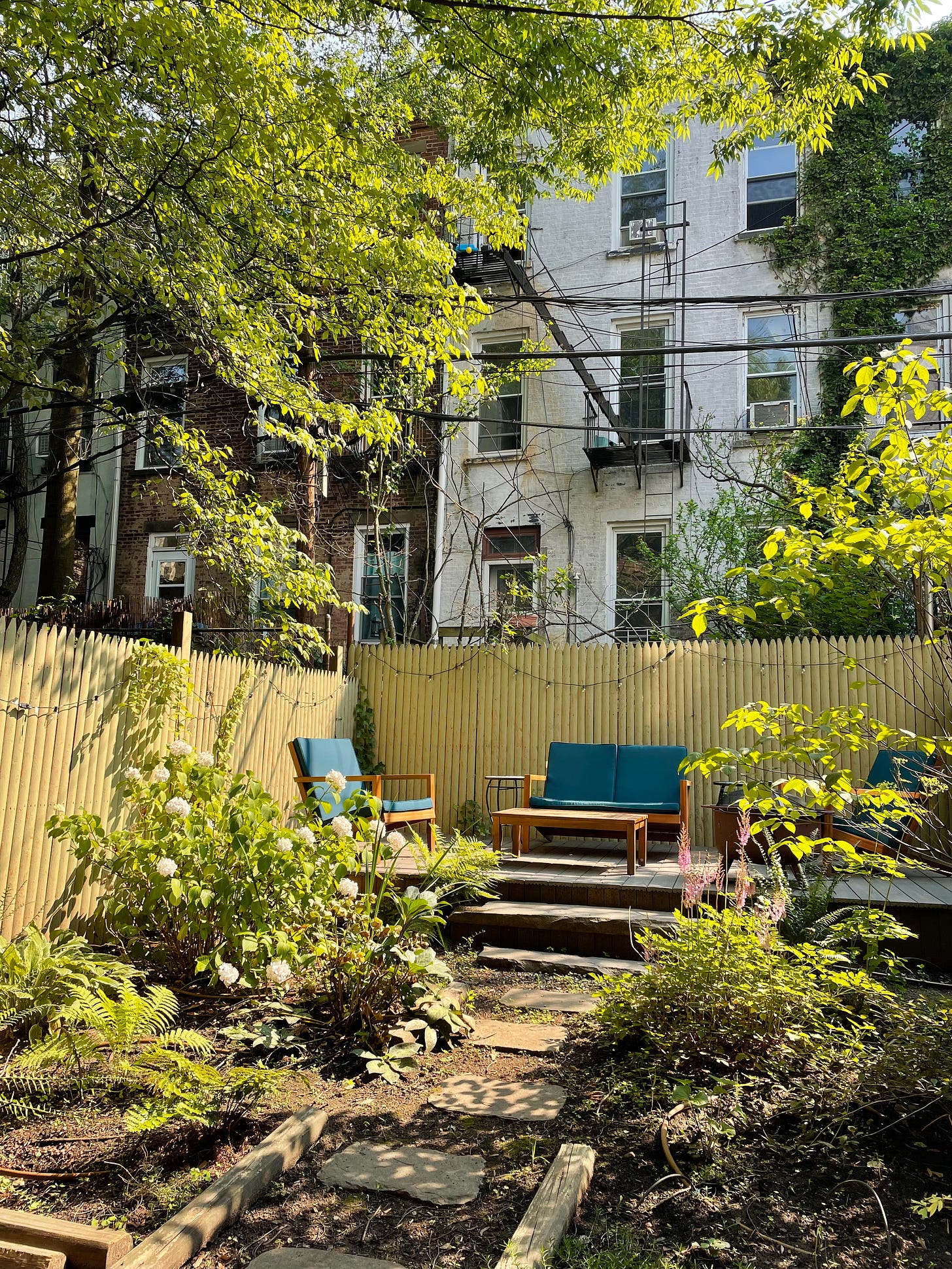
4. Remove What Doesn’t Belong
I removed invasive species that choke native growth.
Still a work in progress, but in my best seasons I aggressively dig out what doesn’t align with my evolving self: authority-pleasing, comparison, measures of success that have nothing to do with my unkempt garden (a jungle is never going to win “tidiest land” award!).
It takes courage to clear the space, but it’s not destruction—it’s preparation. Nothing can grow wild when the gardener is still fighting to maintain what isn’t meant to be there in the first place.
5. Support Biodiversity
I broadened my creative identity/career.
In order to diversify the ecosystem, rewilding gardeners have to plant native species and encourage pollinators (buzz buzz!).
For me, that meant expanding my so-called “identity” to include all kinds of things: writing, visual work, public speaking, collaboration, teaching, experimentation, animal-enthusing, salsa dancing, and apparently now mothering!
A lovely retreat attendee recently asked me if I would still call myself an illustrator. After years of flip-flopping on my bio and in small talk with strangers, it doesn’t even come to mind anymore. That was a project for a time, the way songwriters release distinct albums throughout their career, and now it would fit like a non-maternity shrunken babydoll t-shirt.
However, soooo many other identifiers have taken its place! And they are so much juicier to me, and fit more like a billowy taffeta dress with plenty of extra fabric for growth.
The healthiest ecosystems—and careers!—are diverse. Nurturing all my little curiosities made my creative practice so much more resilient and dynamic, especially when one patch wasn’t doing so well in a certain season.
6. Find Natural Pest Solutions
I quit quick-fixes.
In nature, balance is restored by encouraging relationships—bluejays eating pests, healthy soil resisting disease. Similarly, I realized that I had to build systems that supported my energy, instead of constantly “spraying” problems with avoidance, numbing, or exasperated declarations of quitting forever.
Natural defense systems take the place of quick-fix chemical sprays and keep the creative/career system healthy over time: habits, boundaries, rest, and community.
I used to try and solve stress or creative block with overcorrection rather than tenderness and extra attention. Sustainable creativity requires care, not control.
7. Let Seasons Happen
I resolved to embrace creative winters.
A wild meadow has seasons: bloom, decay, dormancy. Creative energy and any career has seasons too. There’s only one harvest season; other periods are about rest, composting, or waiting. That’s not failure—that’s nature.
Winter doesn’t mean the ecosystem is dead. It means it’s preparing for something deeper, more rooted. I went through a long ass winter during the past few years, but so much growth was happening underneath the surface, ready to sprout up like jack-in-the-box daffodils when the time was right.
All creative practice needs fallow periods for stillness and incubation. Rushing through them only weakens the return.
8. Welcome Wildlife
I realized that if my creative work wasn’t appealing to me, it wouldn’t be appealing to others.
As the land heals, birds and bees and foxes and caterpillars and all sorts of little critters that decorate hand towels return and reproduce. They just find the land! Nobody even has to advertise it to them!
Since advertising and promoting is my absolute worst nightmare, I was relieved that people still showed up organically. I wanted nothing more in the world than to stop hustling and stop trying to explain why my work was valuable. So I stopped.
It felt wrong at first, but as my garden grew the plants it was always supposed to grow, it became an ecosystem that some others wanted to be a part of.
9. Be Patient—It Takes Time
I got comfy with slowwwwwwing down.
I am a terribly impatient individual so this step was torturous for me. However, rewilding teaches you to trust the slow magic—that real change happens underground first, and growth that lasts is always slow.
At first, rewilded land looks messy. It can take months, even years, to stabilize and get going. A career with a healthy ecosystem can’t be rushed. Real growth often looks like confusion, stillness, or subtle shifts—until one day, it all goes bonkers and bursts into bloom. (At least until the next winter ;)
10. Look for what was already there
“Good artists reinvent themselves over time; great artists reveal themselves over time.”
I recently went to see Isaac Mizrahi’s one-man show (which obviously I cannot recommend enough), and he was introduced with the above quote. I furiously scribbled it on my program because it aligned so well with what we’re talking about here!
In conventional landscaping (ahem lawns ahem), reinvention is constant—adding new grass seasonally to existing turf, trimming hedges, using decorative mulch. It’s curated, controlled, and changed often to keep up appearances.
Rewilding, in contrast, is not about decorating the land; it’s about allowing the land to remember itself. You’re not planting for beauty; you’re uncovering the native identity that was always there, waiting to be revealed.
It’s impossible (at least for me!) to keep my creative work fresh and interesting AND consistent with some kind of nonexistent “brand.”
I love this idea of revealing instead, showing more parts of myself that may or may not match the lawn perfectly, but bring in more natural growth.
Reinvention is useful—it’s how we all try on roles, styles, influences. It’s often how good artists adapt. But revelation is deeper. It’s what happens when we stop shaping ourselves to external standards and start uncovering our truest voice—the one that’s been buried under years of performance, comparison, and survival.
11. Intervene with tiny shifts
I’d look for one small thing I could change, which would end up changing everything.
In rewilding, sometimes all it takes is the removal of one fence, the introduction of a single pollinator plant, or a tiny patch of bare soil for native life to come flooding back.
These aren’t massive changes; they’re invitations. They shift the conditions, not the whole system, and those conditions unlock the potential already waiting in the ecosystem.
Two examples:
1. Ten years ago (yikes), I decided I wanted to start doing more watercolor painting because it made me happy. But my 300-square-foot studio apartment didn’t have any place to do such a hobby. To be clear, that was a ME problem. I had not created any space to do such a hobby.
So, I pinched my pennies to buy a second-hand (or…80th-hand?) couch, and I found a coffee table for free in the alley. This setup allowed me to actually be comfortable while painting and have somewhere to splay all my supplies out. I don’t believe my daily illustration goal would have ever stuck without this minor rearrangement.
2. Much more recently, I had a very beautiful website that I paid a lot of money for. However, it was very hard for me to use, and whenever I wanted to update it, I had to reach out to the design guy which I dreaded doing because he has one wild and precious life and I hated bugging him…so eventually I just stopped.
And thus my website was never updated. And thus I subconsciously stopped starting new projects because I didn’t know where to “put” them.
The one hour I remade my website on an easier platform, millions of little idea seedlings suddenly showed themselves!!
Tiny changes create the right ecology for inspiration to return.
12. Do Less to Grow More
I simplified.
A wonderful reader asked me if I was REALLY done doing retreats, or if I’m just on a pause until the baby is more of a human and less of a helpless blob.
My answer is, yes, I am REALLY done doing retreats. At least the weekend ones, which I do at retreat centers around the country.
At first it was only a maternity-leave idea, but then I thought…What if I just stop?
This wasn’t intuitive because I love teaching more than anything else I do; it lights me up from head to toe! But, as I’ve said, I hate having to promote, yet I have an organization counting on me to bring in a certain amount of money for them.
In other words, if I get one more email about how not as many people have signed up as last year, I’m going to lose my mind…and then I really won’t be able to teach again.
When I gave myself the permission to stop entirely, a new idea came waltzing in. I am currently planning a series of smaller, local workshops, which feels just as life-giving but without any of those pesky life-draining emails. :) Simpler, but deeper.
In many rewilding projects, success doesn’t come from adding more, but from removing the excess. Grazing pressure is reduced, machinery is pulled out, roads are left to fade.
This creates space—physical, energetic, and ecological—for what naturally wants to emerge.
13. Use Tools, Not Toxins
I love AI!!!!
My dear Mr. Mari has spent the past five months devoting his evenings and weekends to learning about how to use AI. I must have been out to lunch, because I couldn’t believe my eyeballs when he showed me what he’s done; he’s made is a whole new creative arm for himself
As he likes to say, “Your job won’t be taken by AI; it will be taken by someone who knows how to use AI.”
He taught me that AI is probablistic, not deterministic. That means: the outcome it provides will be distinct every single time you use it; it’s not set in stone. It will be surprising and inventive, not predictable and already decided.
DOES THIS REMIND YOU OF A CERTAIN GARDENING PHILOSOPHY?!??
Nature has always adapted—to climate, invasive species, human presence. Rewilding doesn’t mean going backward; it means creating an ecosystem that can survive the present and future.
The creative world must evolve too. Rather than resist, we can evolve with technology, staying rooted in our values but open to change.
Even in a rewilded field, the intelligence of the land isn’t in the soil alone—it’s in how the ecosystem interacts. The gardener is still essential. AI can generate content, but it doesn’t hold context, taste, or soul—you do. The human mind becomes more important, not less, when tools get more powerful.
And AI is a tool, not a toxin.
Creative types (and other types!!) shouldn’t fear new tools, but we should lead the way in how we use them thoughtfully. It’s not about abandoning your hand; it’s about extending it (think: shovel, trowel, rake). Using tools well helps shape our work while honoring originality.
So, if you’ve been feeling clipped short, saturated with fertilizer, or lifeless beneath the surface…may I suggest saying no to lawns and yes to rewilding??
P.S. My new book, which grew from a long period of rewilding, is available for pre-order. My next retreat in upstate New York is this weekend, and will indeed be my last. 🩷


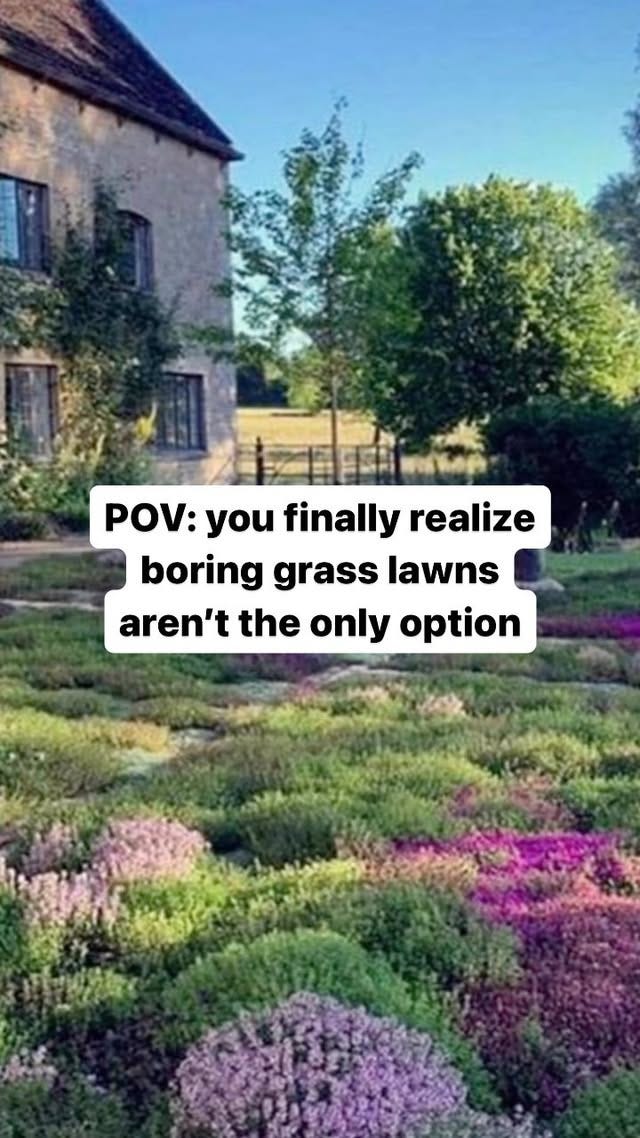
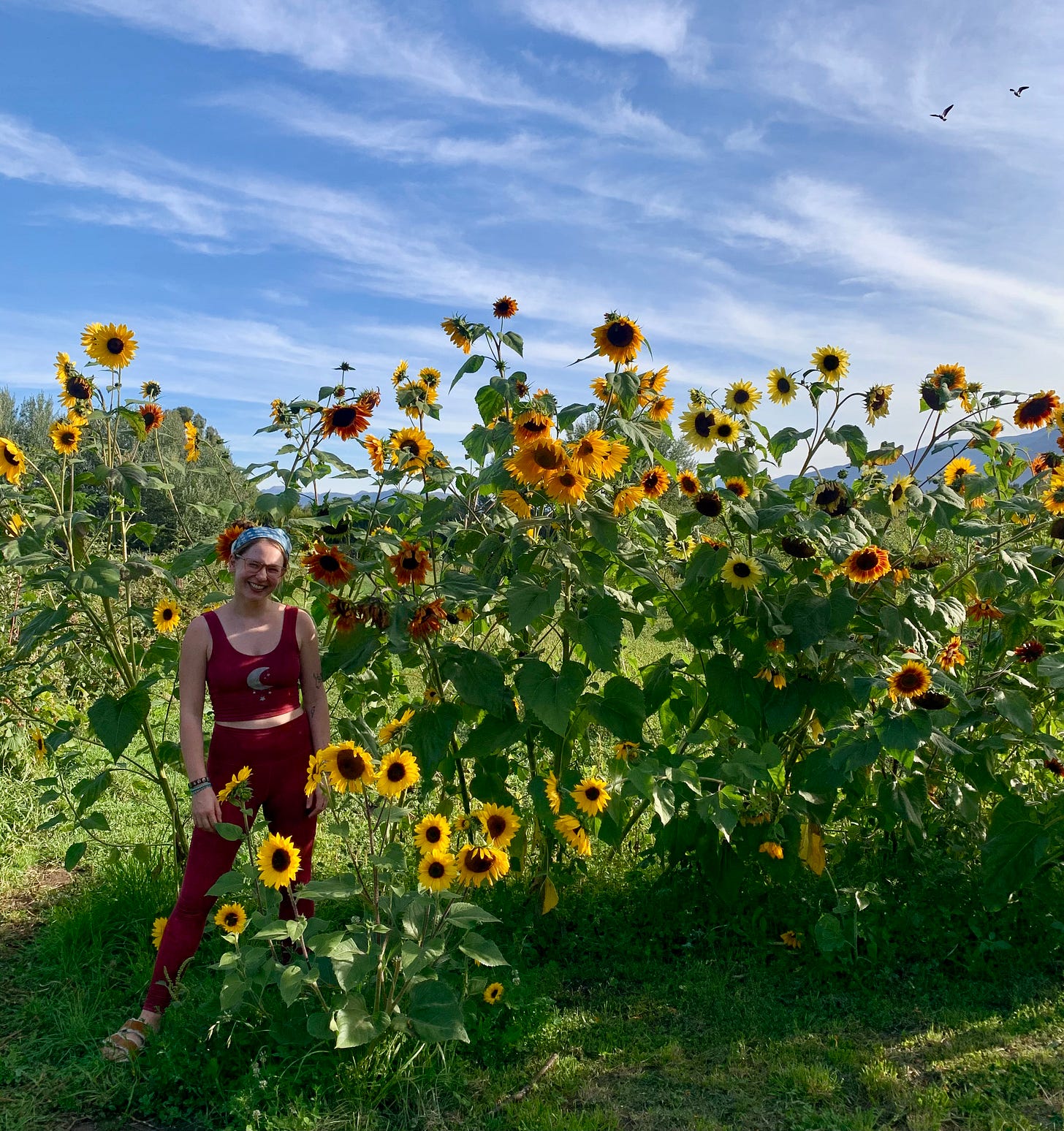

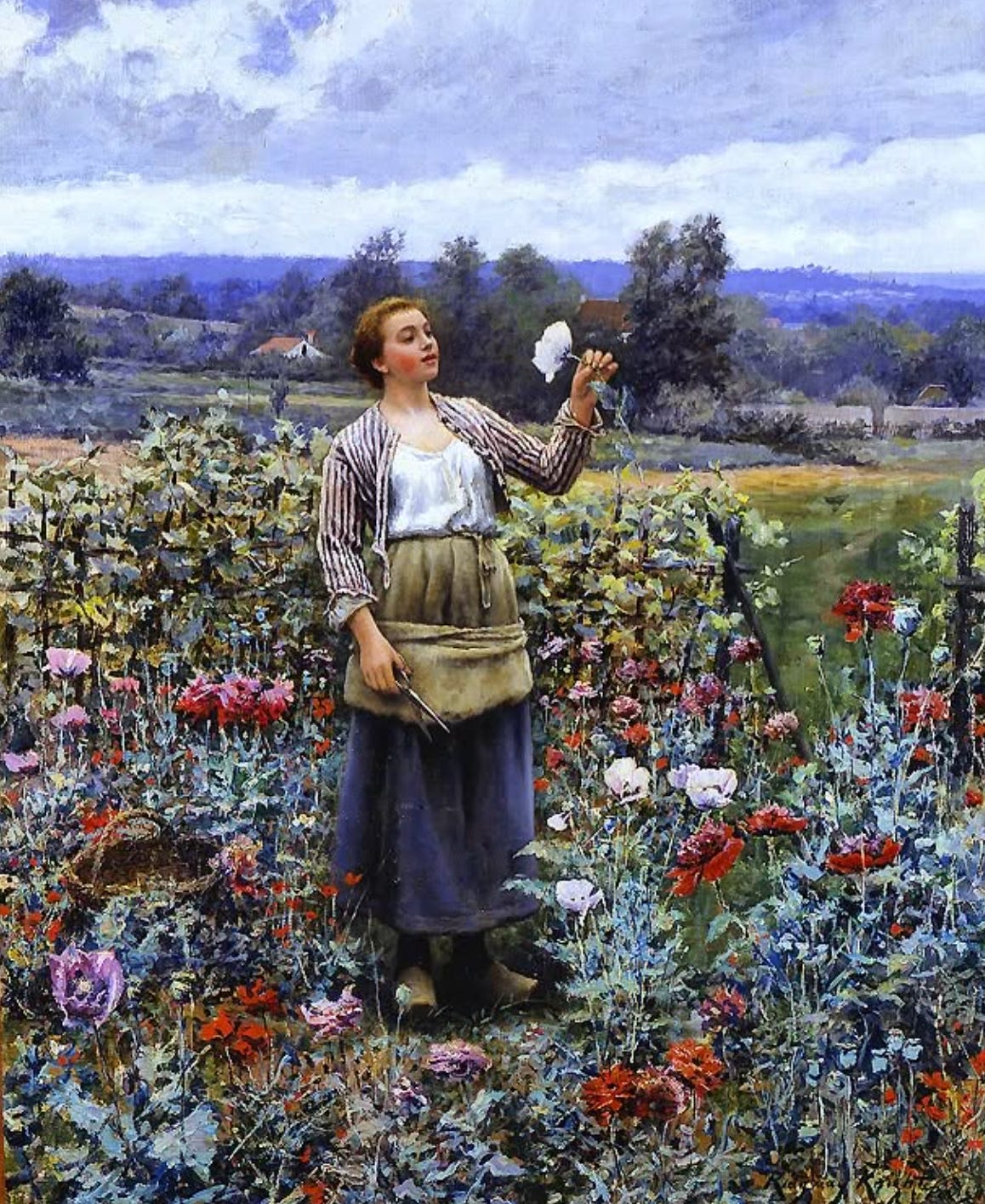
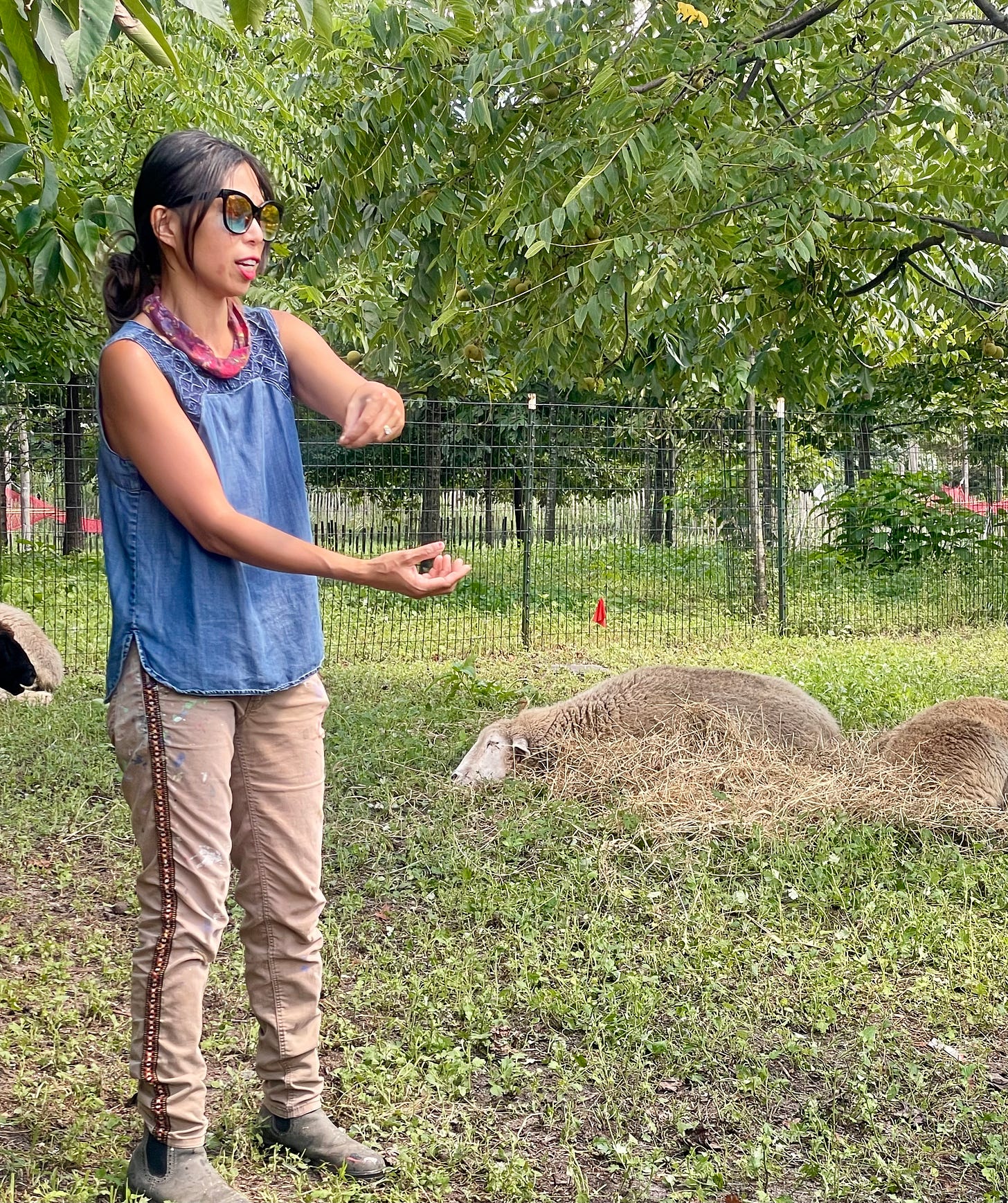
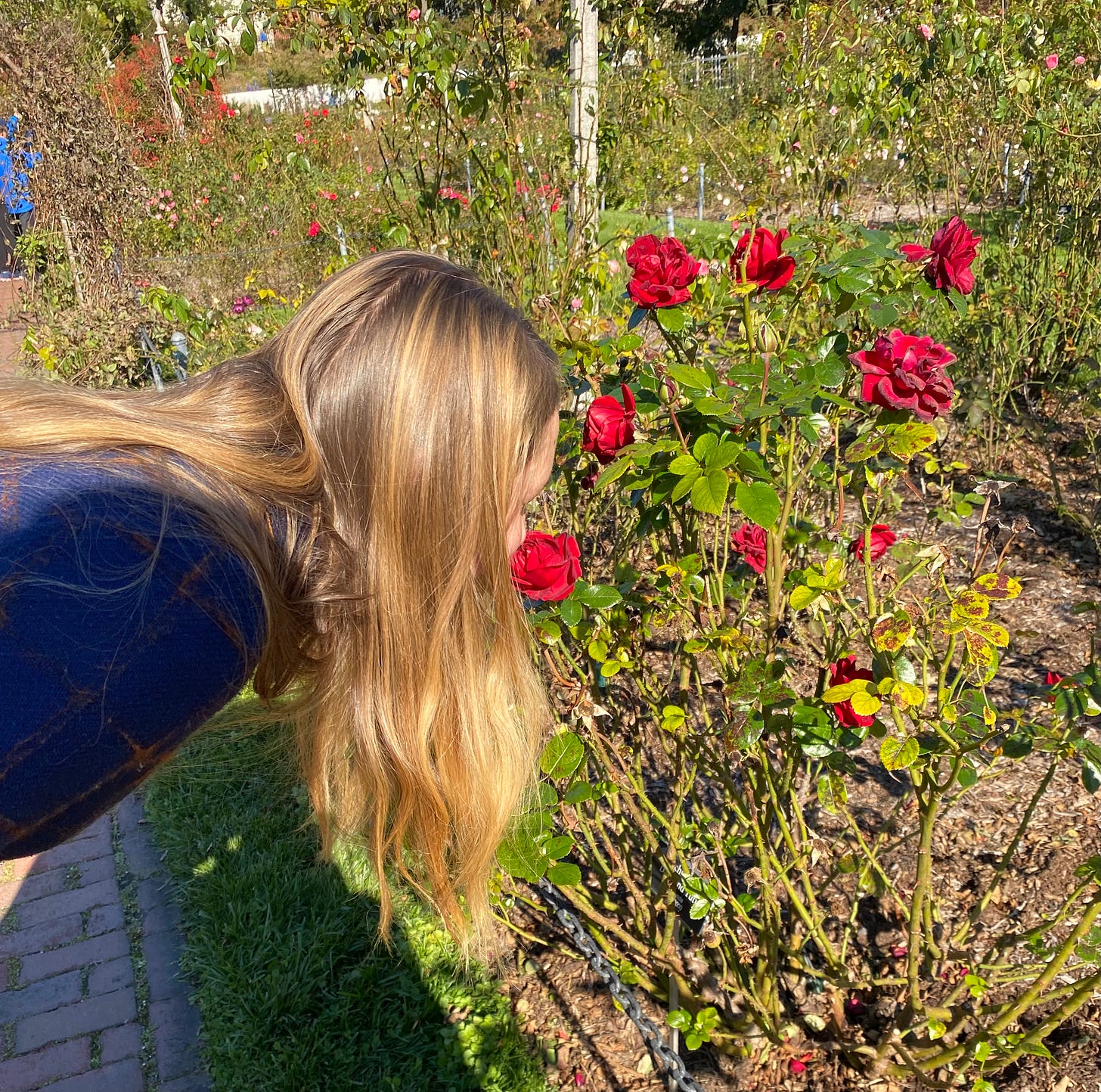
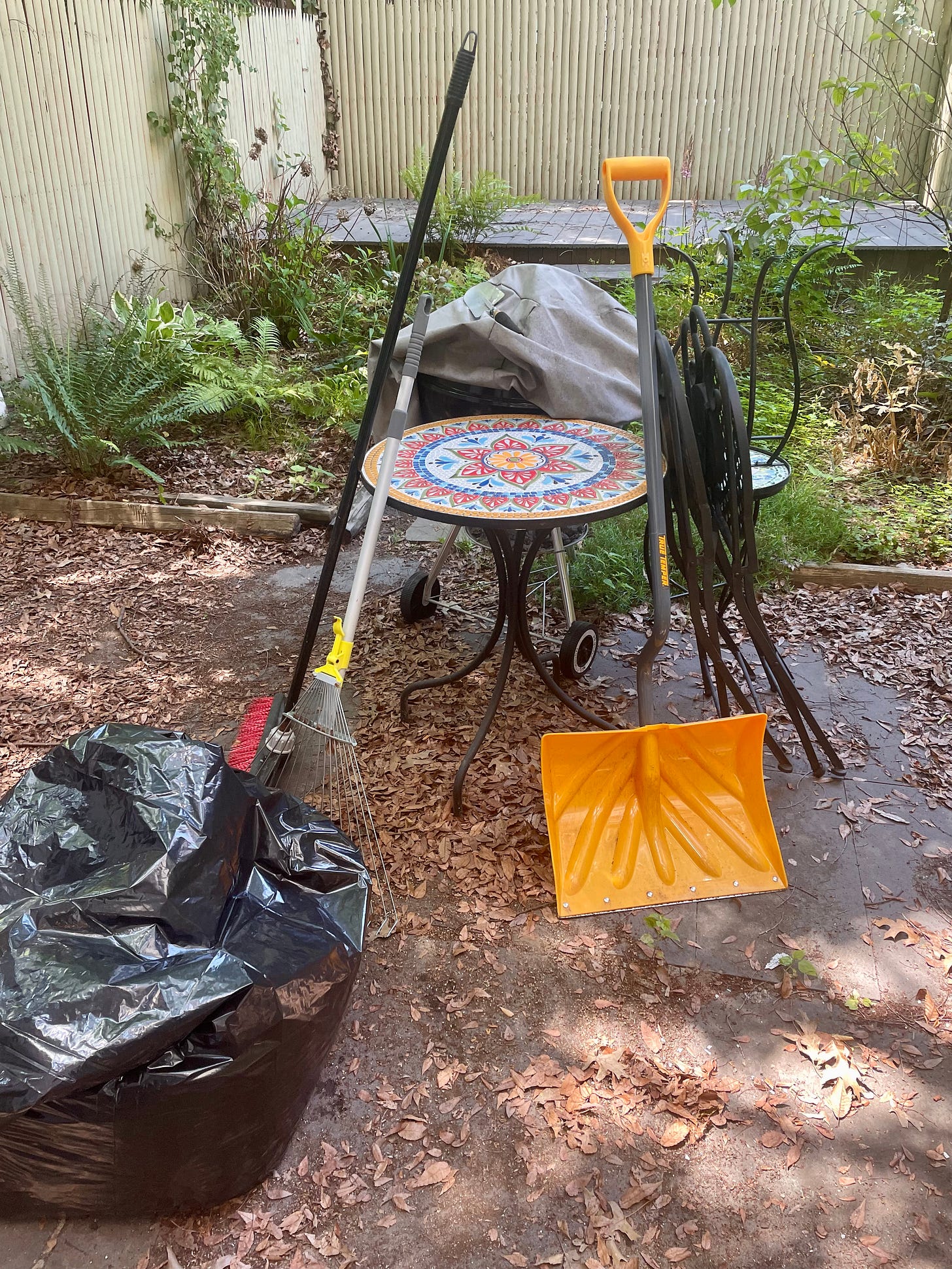
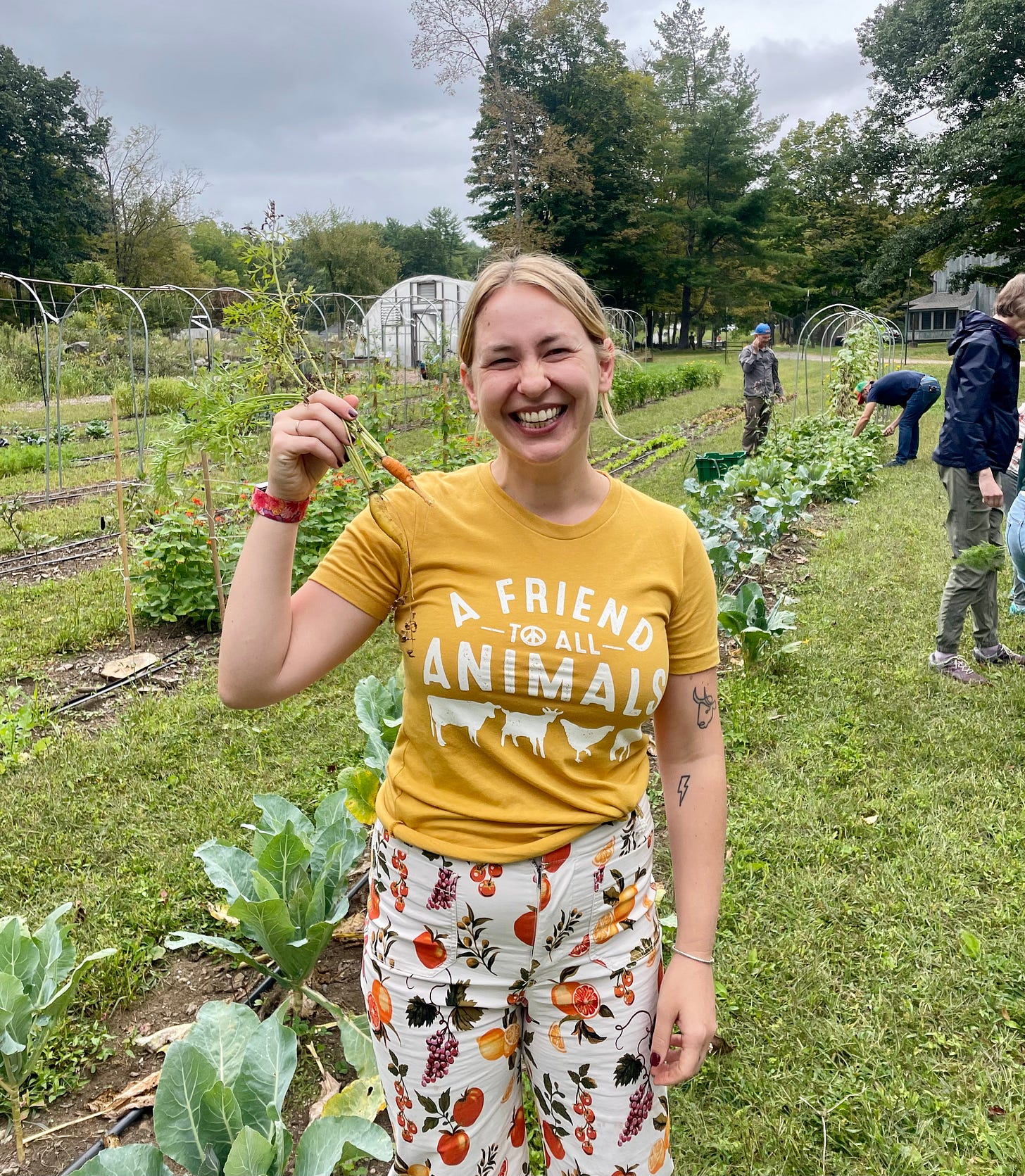

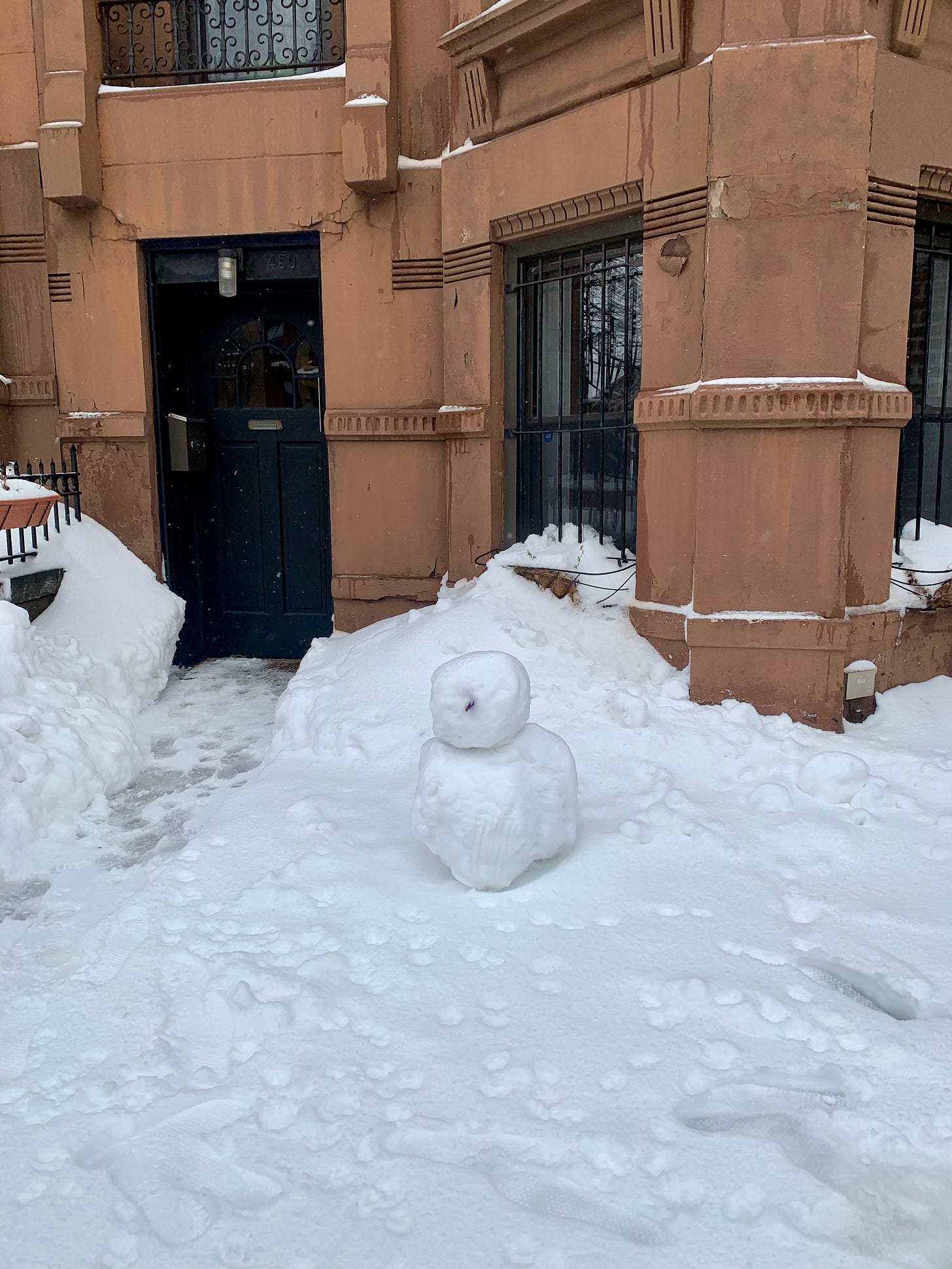
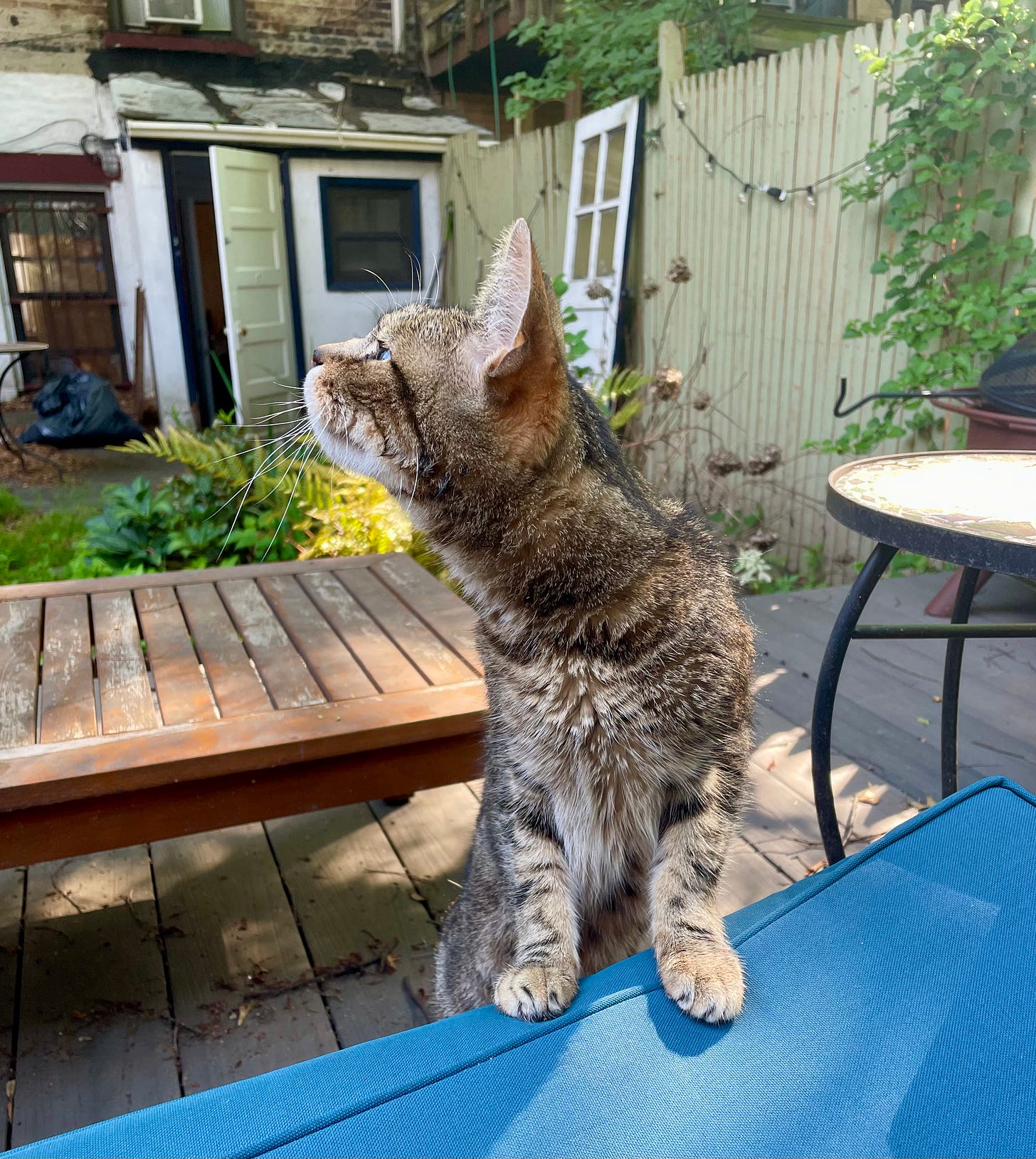
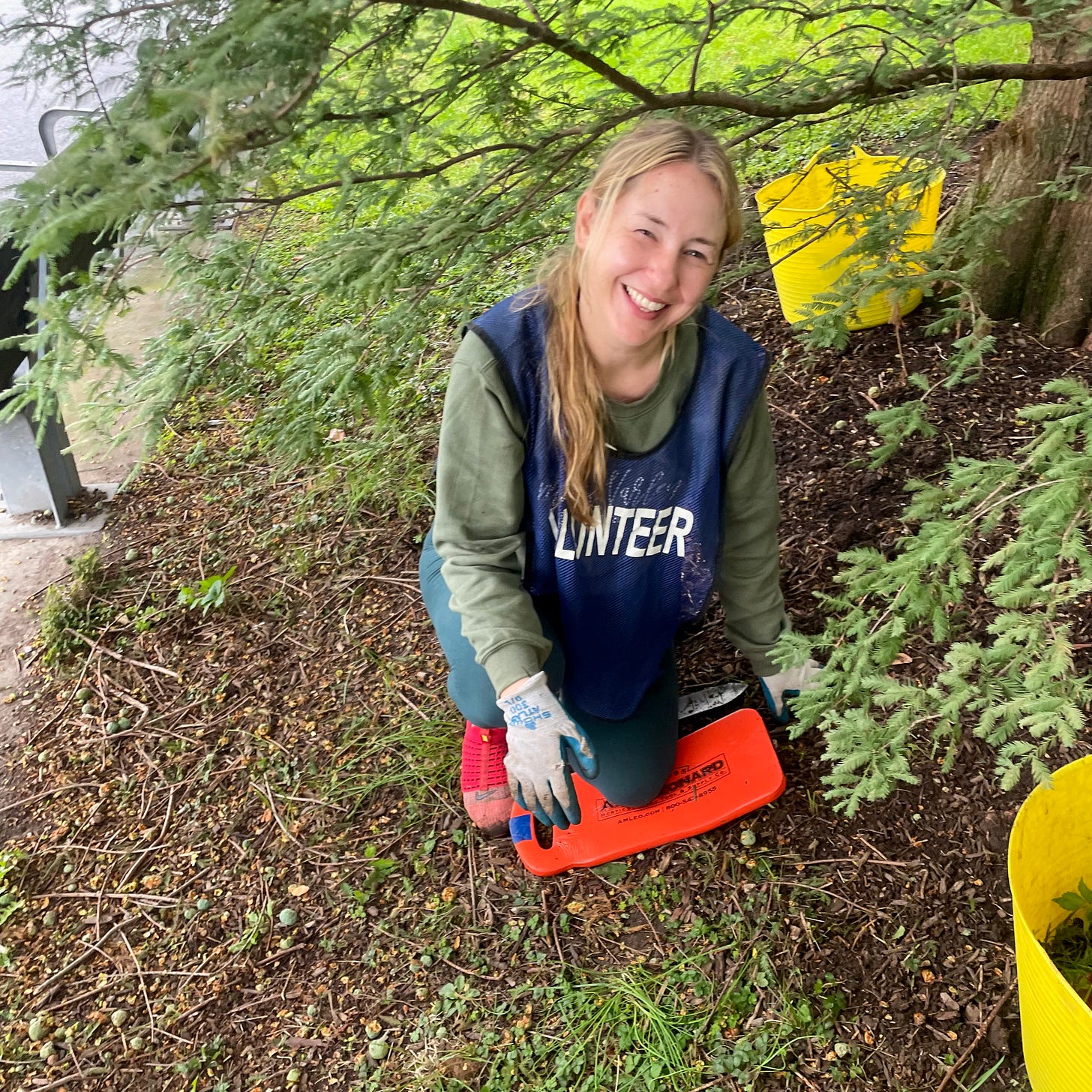
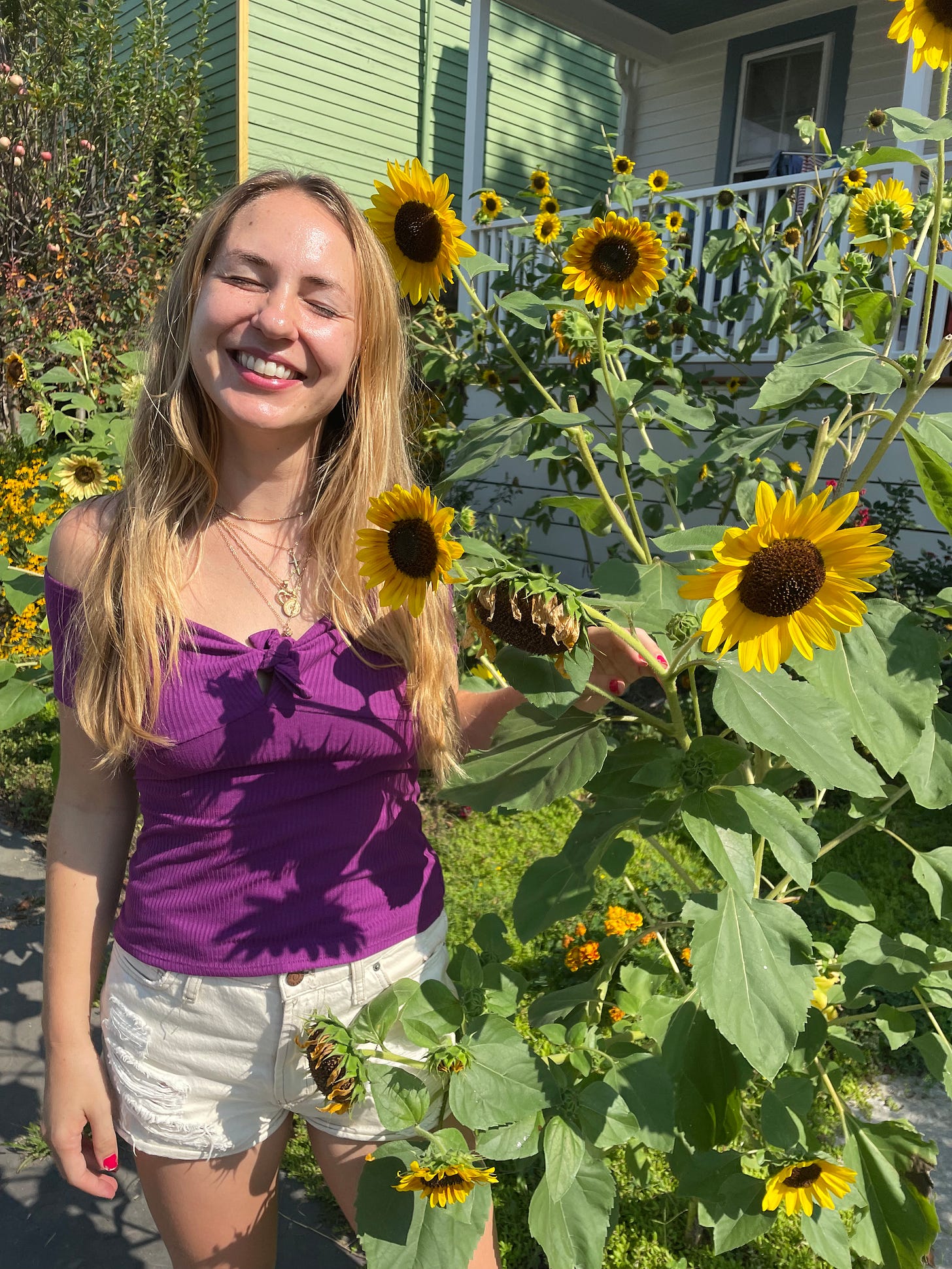

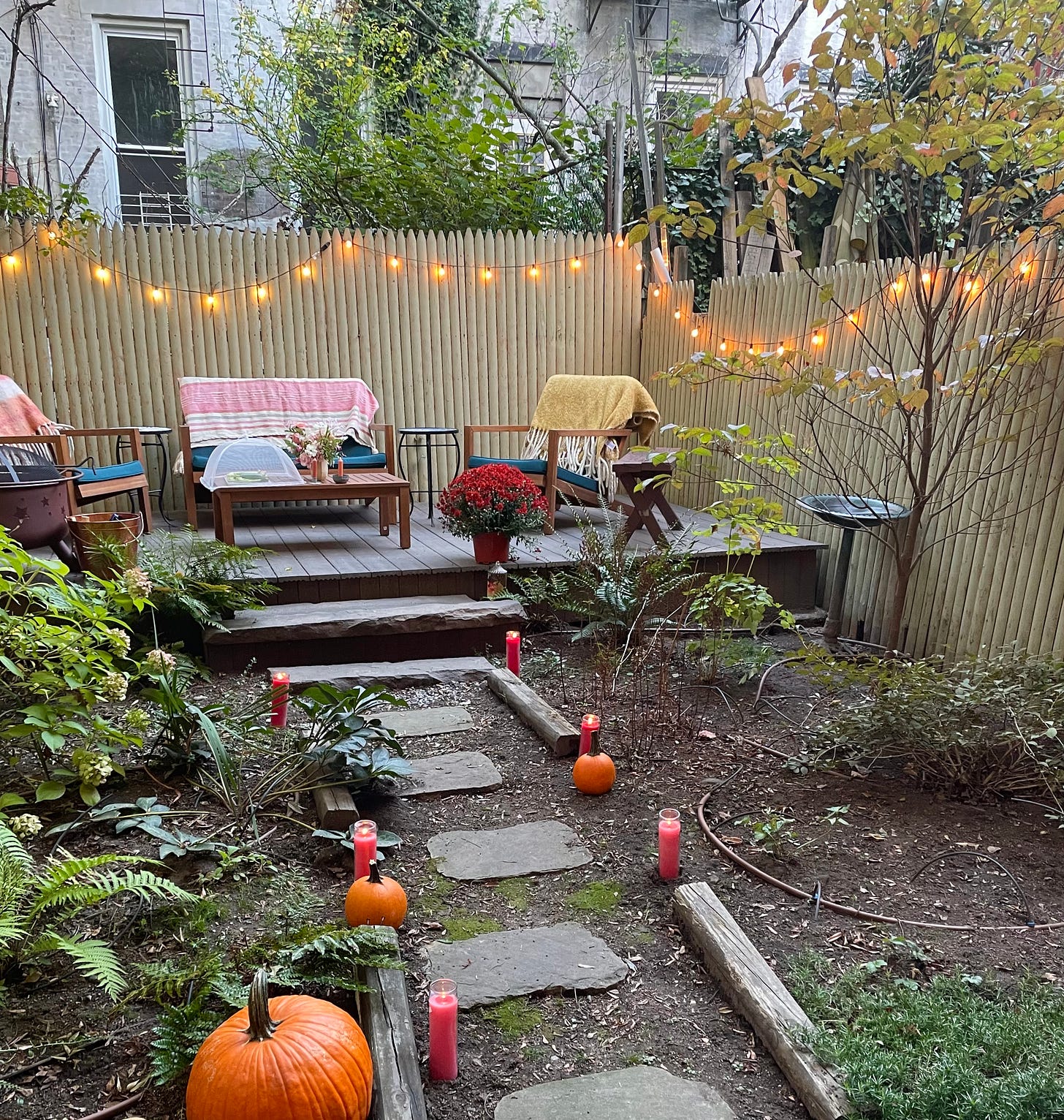

oh it is such a blow to hear you talk lovingly about AI. It is not a new tool with no implications behind it like a pencil or a ruler. To me it is like a death- the turning over of the messy interesting valuable part of making something, into some cold generated blob of nothing. There is a soullessness to things that have been made with AI- and as a person who works in education with elementary schoolers, it is really scary to watch how it is stealing all of the oomph and agency from the next generation. Instead of “i want to learn to draw” its “ask the AI to give me a drawing that looks like x” because learning to draw takes time, and the AI can already do it. Instead of reading the book, its ask the AI for the summary- or even just write the paper for me. I value the shittiest scribble of a child so much more highly than the “finest” generated prompt of these nothing machines, built on stolen work and auto correct/text predictors on steroids.
I love a lot of what you are saying here though. AI aside, I think the rewilding and the re-evaluation of your art and career landscape every so often is important. My kids at school today asked me if I want to be doing this for my whole life, and I think I surprised myself as much as them when I said “I certainly hope not.” It made me think more seriously about looking into shelving books at a library when we make our next move- I used to dream abt working at a library. I am an artist and my main art focus has felt very much like a prison lately. All I want to do is knit. I haven’t touched the apple pencil willingly in months. And that is okay, I think. My art career doesn’t have to be the same things forever- and how boring if it was. What a joy to chase and follow my own personal sunshine down the paths it chooses- sometimes years along one path, and then a hard turn.
thanks for this post, very good food for thought
I love this dearly! Such a beautiful reminder to “adopt the pace of nature, her secret is patience” 🌻